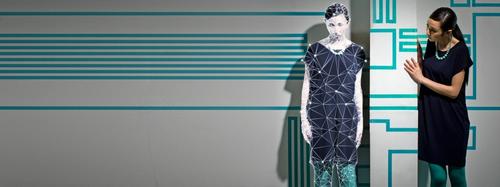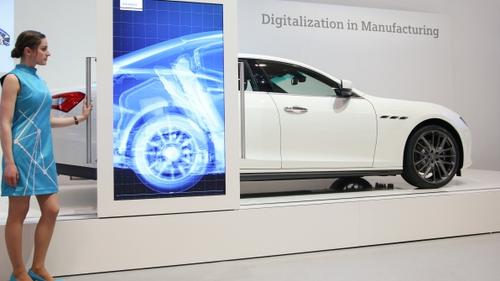Like Industry 4.0 and IoT, the term "digital twin" describes a collection of existing technologies that have become inextricably tied together.
May 17, 2016
Every year there’s a handful of new terms that show up in the industrial technology world. Some buzzwords are launched to support sales and marketing efforts. Some are handy descriptors of something new in the industrial world. Still others name a trend that has truly come to stay. In the last two or three years, we’re seen Industry 4.0, smart manufacturing, and IoT and its industrial counterpart, IIoT.

This version of a digital twin involves collecting data on a human.
This week at PLM World in Orlando, Fla., we’re hearing the term digital twin in nearly every session. Siemens is pushing the term hard as a descriptor. Roughly, digital twin refers to the collection of a wide range of data on a product. It’s the virtual equivalent of a physical entity.
The term isn’t entirely new, but it hasn’t been widely used. Wikipedia has a short page on the term, noting that it’s the 3D modeling equivalent of a product. The page also notes it can be applied to prognostics, diagnostics, and monitoring. The Siemens PLM team is using digital twin very deliberately to describe a much wider and deeper collection of the data that’s tied to a product.

This is the digital twin during the design process.
For Siemens, digital twin includes the product’s design data, including CAD drawings through all stages of development; materials data; CFD and CAE data; simulation and modeling; any augmented or virtual reality iterations of the product; individual parts and assemblies that make up the product; test and measurement data; the bill of materials; production models and manufacturing data; and finally -- long after the product has entered the hands of users -- feedback from the field.
READ RELATED ARTICLES:
The digital twin exists over time, not just space. It’s the history of the product from conception through its end-of-life -- a collection of all the requirements and ultimate performance of a product. “The digital twin is an accurate digital representation of a digital part, process, and factory experience. It even includes how a product is utilized,” Thomas Maurer, senior director of strategy at Siemens PLM, told Design News.
He said he sees the digital twin as a necessary collection of data during all stages of a product’s life, or as he put it, lifecycle analytics. “On the front end of the twin, we’re looking at how we expect the product to perform. That leads to better requirements,” said Maurer. “Then we look at simulation to determine how we expect the product to perform. What are its limitations? Then we look at utilization -- what are the sensors reporting back?”

Here's the digital twin from the finished product.
Like Industry 4.0 and IoT, the digital twin term describes a collection of existing technologies that have become inextricably tied together. Those who are designing, producing, and then servicing products in the field, need all of the data in the digital twin during one stage of the product’s life or another. And in any stage, it’s not clear what data exactly will be needed. So it all must be bound together, and thus, it’s the product’s virtual twin.
So, will the term catch on? If it makes it easier to describe what people are working on, then yes. “Let’s go look at the digital twin,” might be easier than saying, “Let’s take a look at the original sketches, the initial requirements, the simulation data, the BOM, the CFD data, and the field data to see if the product needs to be updated.”
[images via Siemens PLM]
Learn more at Atlantic Design & Manufacturing June 14-16, in New York.
Rob Spiegel has covered automation and control for 15 years, 12 of them for Design News. Other topics he has covered include supply chain technology, alternative energy, and cyber security. For 10 years he was owner and publisher of the food magazine Chile Pepper.
About the Author(s)
You May Also Like





